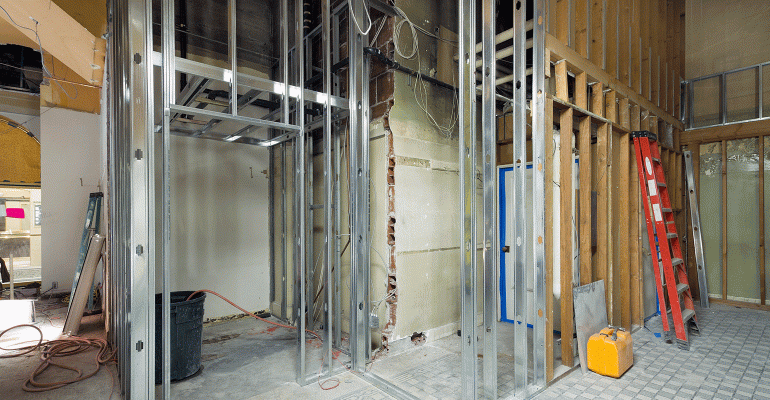The tax bill passed Wednesday by Congress might not enjoy popular support, but according to tax attorneys specializing in restaurants, many operators stand to gain from it, and they’ll gain even more if they invest in renovations over the next five years.
According to data-based publication Fivethirtyeight, just about a third of voters support the Tax Cuts and Jobs Act and 46 percent oppose it. Numerous small-business associations decry the complexity of the new regime and say it favors large corporations over small ones, especially with the change in corporate taxes from as high as 35 percent to a new flat rate of 21 percent.
“Some people love it, some people hate it, but that is what it is,” said Jeff Tubaugh, a Columbus, Ohio-based tax partner of the Chicago accounting and auditing firm BDO USA.
However, he sees several benefits for restaurants under the new tax structure, especially in the short term.
Probably the biggest benefit is the five-year bonus depreciation that can be applied to business purchases, such as kitchen equipment, dining room fixtures, furniture, remodeling materials, and even landscaping and parking lots.
“Everything except for real property or buildings,” said Rachelle Bernstein, vice president and tax counsel for the National Retail Federation, of which the National Council of Chain Restaurants is a division.
Normally, tax deductions for large expenses must be amortized over several years, but the new regime allows 100 percent deduction in a single year through 2022. After that it will be phased down by 20 percent per year, so in 2023 only 80 percent can be deducted and 20 percent of the deduction will have to be held over into 2024 until the entire break expires at the end of 2026.
“It’s a nice write-off for all of your furniture, fixtures and equipment,” Tubaugh said.
And Bernstein emphasized that there’s no limit to this deduction: If a large chain wants to spend $140 million renovating every unit in its system, the expenses are 100 percent deductible in the first year.
“You can go and remodel a whole chain and write it all off in the first year, and that’s honestly what they want you to do,” she said, because it will stimulate growth in other sectors such as construction and kitchen equipment.
Tubaugh added that such bonus deductions, first implemented during the recession in the aftermath of Sept. 11, 2001, used to only be applied to new equipment, but the new bonuses are applied to used equipment as well.
But watch how much you borrow to make those investments, Bernstein said. Before the new tax regime, interest on business expenses were 100 percent deductible. Under the new system, you can only deduct 30 percent of EBIDTA (earnings before interest, taxes, depreciation and amortization) in the first year. The rest has to be rolled forward into future years.
“Every business I’ve talked to except for some that have really huge debt levels already [and none of those are restaurants] say that this isn’t going to hurt them,” she said.
Although the corporate tax rate is being cut for most businesses, operators of S corporations and other pass-through companies remain taxed as individuals, often with rates higher than 21 percent. As an offset to that, Tubaugh said, pass-through companies are getting about a 20 percent reduction in their “qualified business income.” So, for example, if your business makes $1 million, you only pay taxes on $800,000 of that, more or less.
“There’s a long, long drawn-out calculation for this,” he said. “But 20 percent is a good idea of what they’re doing for pass-through entities.”
Although the lower corporate tax rate might make it appealing to switch from an S corporation to a C corporation, Tubaugh advises caution.
“Usually my response has been, we need to model that out for you,” he said. Although this might be a good time to look at whether to change your company’s structure, “there is no straight yes-or-no answer,” he said. “Just seeing the corporate rate at 21 percent does not mean you should jump the gun and become a C corporation tomorrow.”
Tubaugh added that there are some down sides to the new tax structure.
Restaurants with commissaries that prepared food for the restaurants and sold them to those restaurants used to get a 9 percent deduction on that income. “That provision has been eliminated,” Tubaugh said.
Additionally, for individual federal income taxes, state and local income taxes as well as property taxes used to be deductible. Now that deduction is capped at $10,000. So if you run a pass-through company and are doing businesses in multiple states, you could easily pass that figure, Tubaugh said, especially if you operate in high-tax states such as New York and California.
“I actually have a client that deducts about $400,000 because he’s a very successful restaurant company. I have to call him tomorrow and tell him he gets [$10,000] instead of $400,000,” he said.
One more thing: Since chances are high that your rate of taxation is going to be lower in 2018 than 2017, try to get as many expenses in before the end of the year as you can, Tubaugh said.
That includes bonus deductions for capital improvements, which apply retroactively to assets placed in service after Sept. 27, 2017, Tubaugh said.
Bernstein added that the new regime will mean tax cuts for all income brackets for at least the next eight years.
“At least in the short term, the consumers should have more cash in their pockets,” she said. With lower taxes and, ideally, more spending from customers, “it should result in a top-line benefit and a bottom-line benefit.”
Contact Bret Thorn at [email protected]
Follow him on Twitter: @foodwriterdiary
December 12, 2017: A previous version of this story misidentified BDO USA, which is an accounting and auditing firm.

